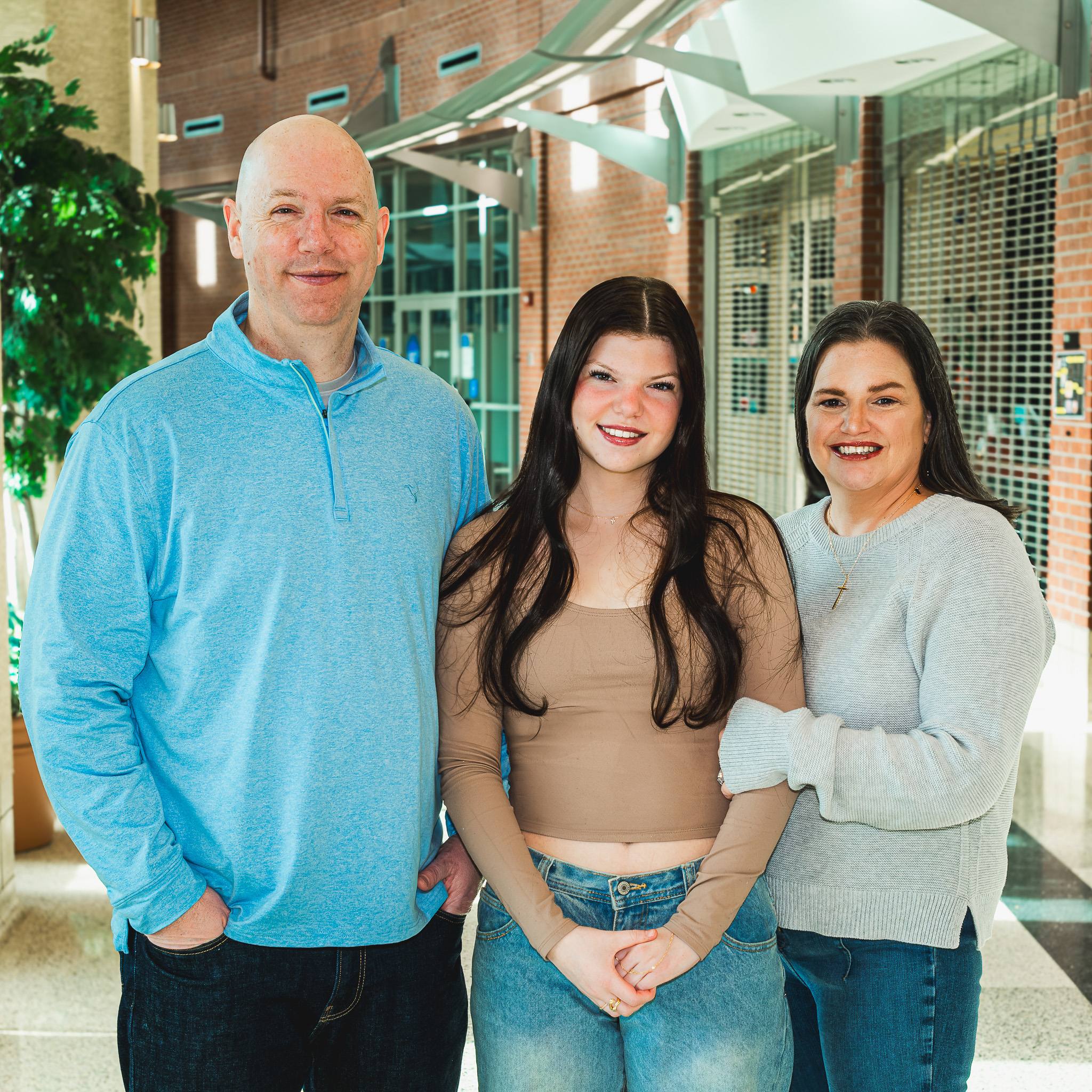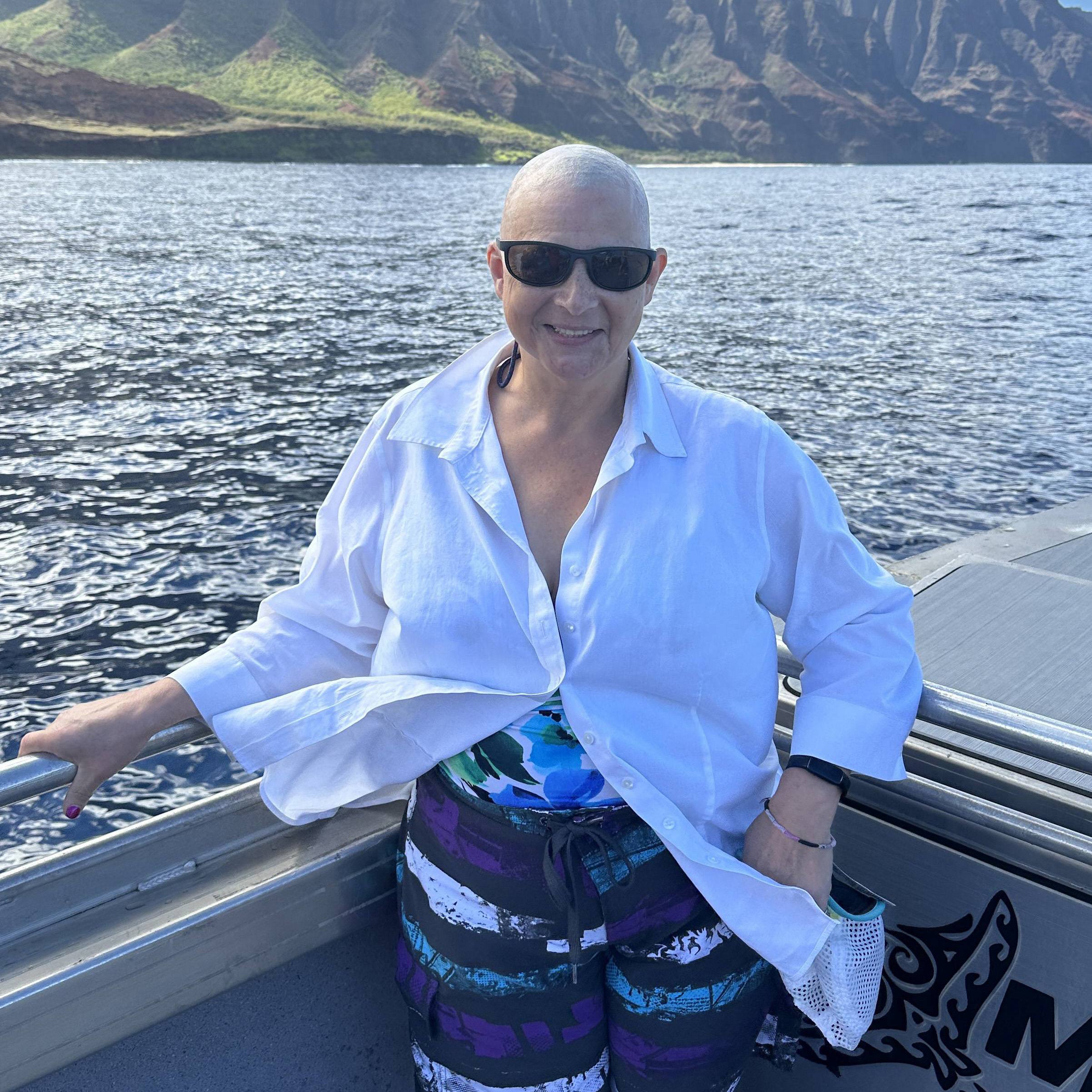
When Robert Anderson realized he was facing cancer and a possible amputation of his leg, he wrote down three goals that he still carries in his wallet: Save my life, save my limb and maintain an active lifestyle.
Three years later, he's two for three on his list and not looking back.
In 2006, Anderson, then age 41, of Rogers, Minn., was a guy on the go. He enjoyed his work in corporate finance. The father of two active children, he coached youth baseball and hockey teams. Anderson played hockey and ran marathons with his wife, Lora.
While he was training for Grandma's Marathon, a summer event in northern Minnesota, a bothersome symptom occurred. Anderson's buttocks muscles tightened after a run and no amount of stretching helped. Lora, a physical therapist, suggested he see a chiropractor. The chiropractor took a routine X-ray, noticed something amiss and insisted that Anderson schedule an MRI — and soon.
"I had a tumor in my pelvis," says Anderson. The tumor was a fibrosarcoma, a rare and tenacious form of bone cancer. Less than 1 percent of all cancer diagnoses are fibrosarcoma.
Anderson's tumor was large — about the size of a 15-ounce can of beans — but hadn't yet affected major organs. He underwent seven weeks of radiation. The tumor did not change.
You won't walk again
To remove the cancer, a surgeon recommended a hemipelvectomy — amputation of his left leg and half of his pelvis. The surgeon told the couple that Anderson would not walk again after the surgery. The doctor did not have answers to their questions about rehabilitation or prosthetics.
The news, says Anderson, "was incomprehensible." The conversation and the prognosis especially angered Lora, who knew through her work that hemipelvectomy didn't have to mean "wheelchair."
"Lora is a big believer in having the patient make the decision," says Anderson. "She wanted to know the options." The couple went into research mode, investigating treatment and rehabilitation options at major medical centers, including Mayo Clinic.
Mayo Clinic was the only place where Anderson heard amputation and rehabilitation discussed as a continuum. Orthopedic surgeon Thomas Shives, M.D., confirmed that the drastic surgery was needed to remove the cancer. "I told the Andersons that we wouldn't send Robert home until he was ready, and there is a team here to help him get back on his feet," he says.
Dr. Shives and his team successfully removed the tumor and performed the hemipelvectomy on June 21, 2006. Anderson was hospitalized for 10 days and moved to a Mayo Clinic rehabilitation unit for another week. There, he started work with physical medicine and rehabilitation specialist Karen Andrews, M.D. The rehabilitation team included physical therapists, occupational therapists and an orthotist to fit a prosthetic hip and leg.
"We discussed prosthetic rehabilitation and prosthetic fitting with the Andersons," says Dr. Andrews. "We expected he'd be ready for a fitting in two months. In the meantime, his focus was on learning to function without his leg."
Finding the right prosthetic
Anderson's goal for rehabilitation was clear. "I told Dr. Andrews that I wanted to walk again," say Anderson. "My goal was not to use a wheelchair as a primary mode of getting around."
Anderson started with more traditional prosthetics that operate as a hinge — releasing and returning with no resistance. For him, they weren't safe. "Without warning, I'd find myself looking up at the garage rafters," he says.
It took several tries of prosthetics to achieve the comfort and safety in the activity level Anderson desired. Four hip and two knee prosthetics later, he's using a state-of-the-art hip and microprocessor technology in the knee that reacts to changes in the gait pattern and weight transfer as they occur.
So, should Anderson stumble, the resistance in the leg increases as it would in a typical leg and he can catch himself. "Safety is my primary concern," he says. "I've had just one fall in 18 months."
Anderson still is incredulous that it took an amputation of this degree to excise his cancer. "You'd think there'd be a pill, or laser or chemotherapy regimen," he says. But given the type and location of the tumor, surgery was his only viable option.
A real world example
He's making the most of the choices he had and has been willing to share his experiences with other patients. At the request of Dr. Andrews, Anderson has talked with a handful of Mayo Clinic patients considering hemipelvectomy. His story inspires others, says Dr. Andrews, and "allows people to see that there is life after limb loss."
"I don't know if patient advocate is the right word," says Anderson of his role talking to other patients. "I tell them what's possible and give real world examples of what I am capable of doing. It's been my choice to walk again, to shoot baskets and play catch. That's the message I share."
Anderson returns to Mayo Clinic every six months. Three years after surgery, there's no sign of the cancer and the prosthetics are doing their job. He's playing whiffle ball with his daughter, golfing with his wife and coaching his son's sports. He rides a recumbent bike. He's on an adaptive hockey team. He's back at work.
"I kept the active lifestyle," says Anderson. "And that was very important to me."







